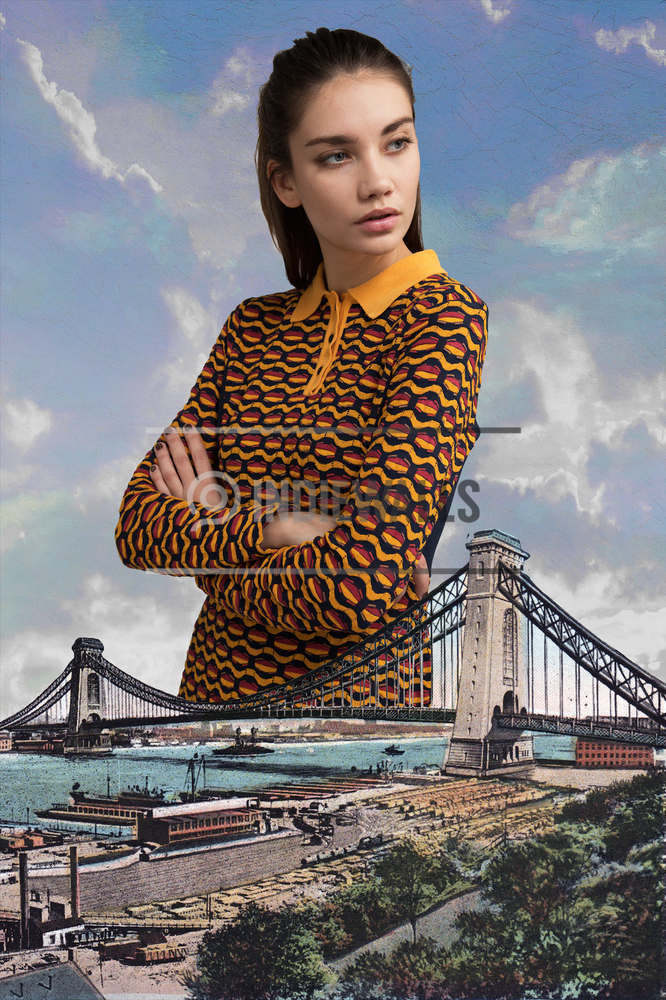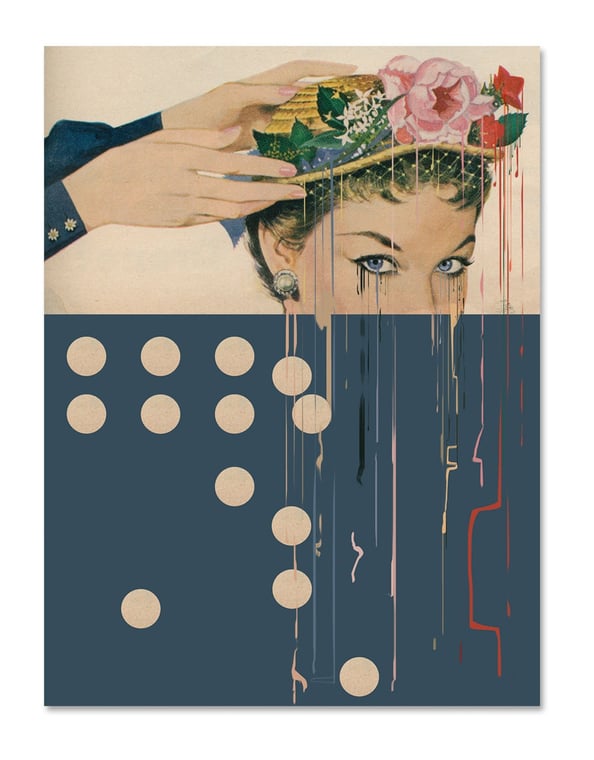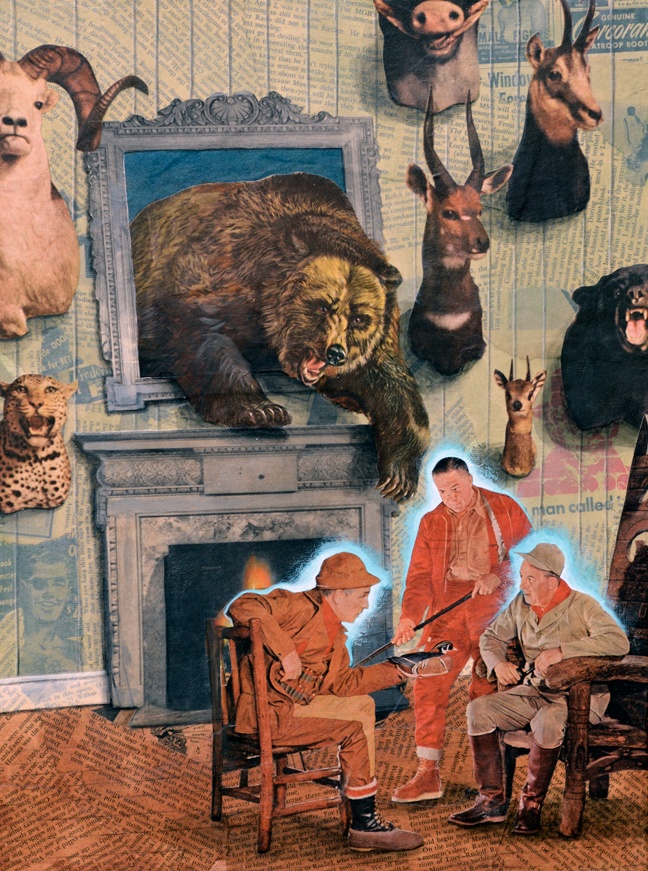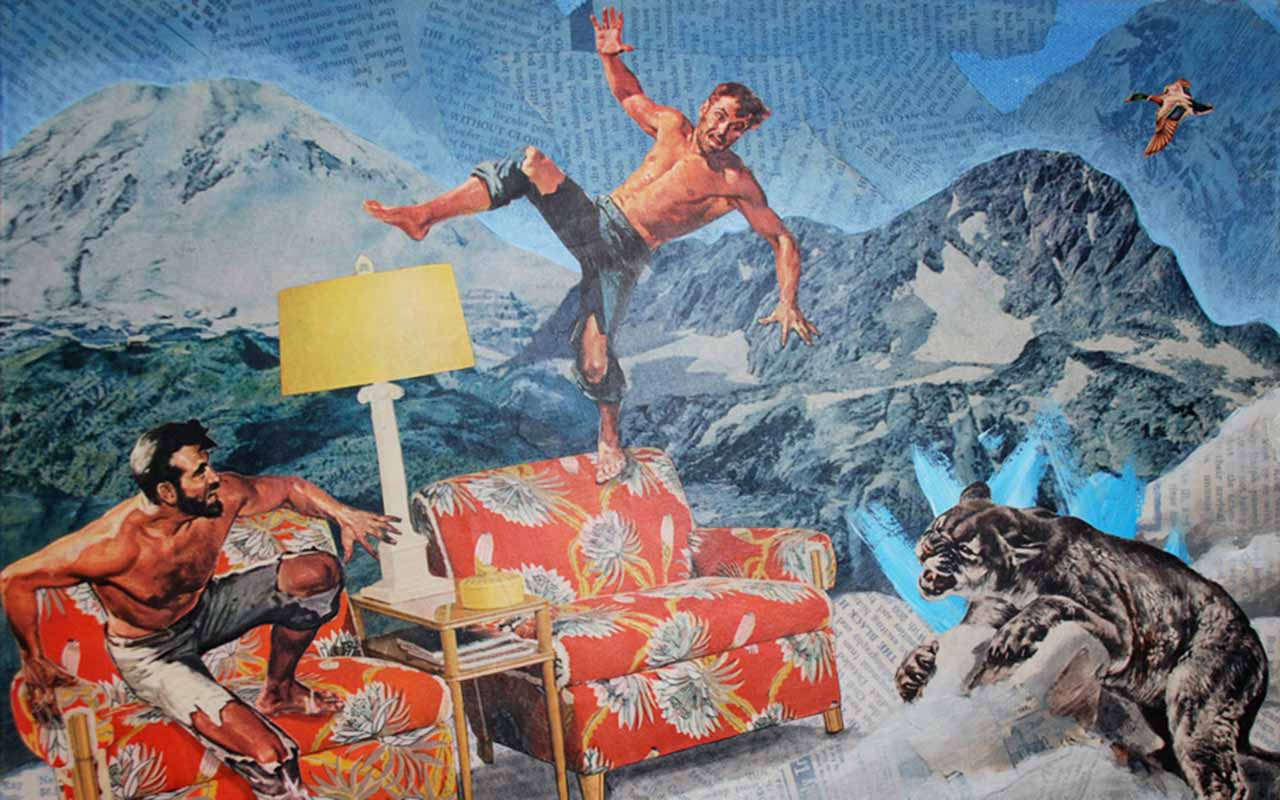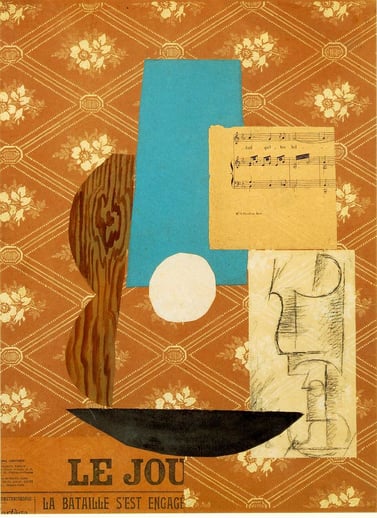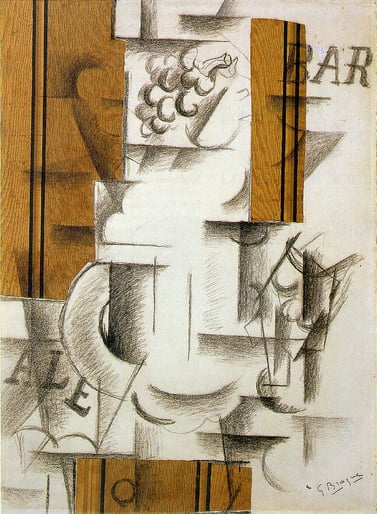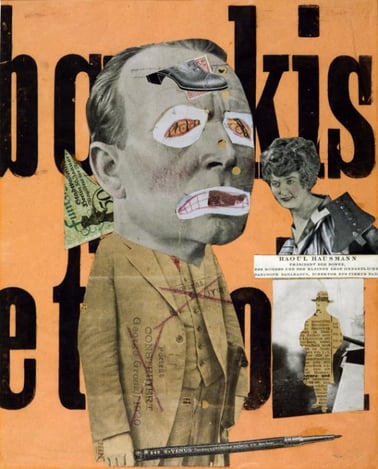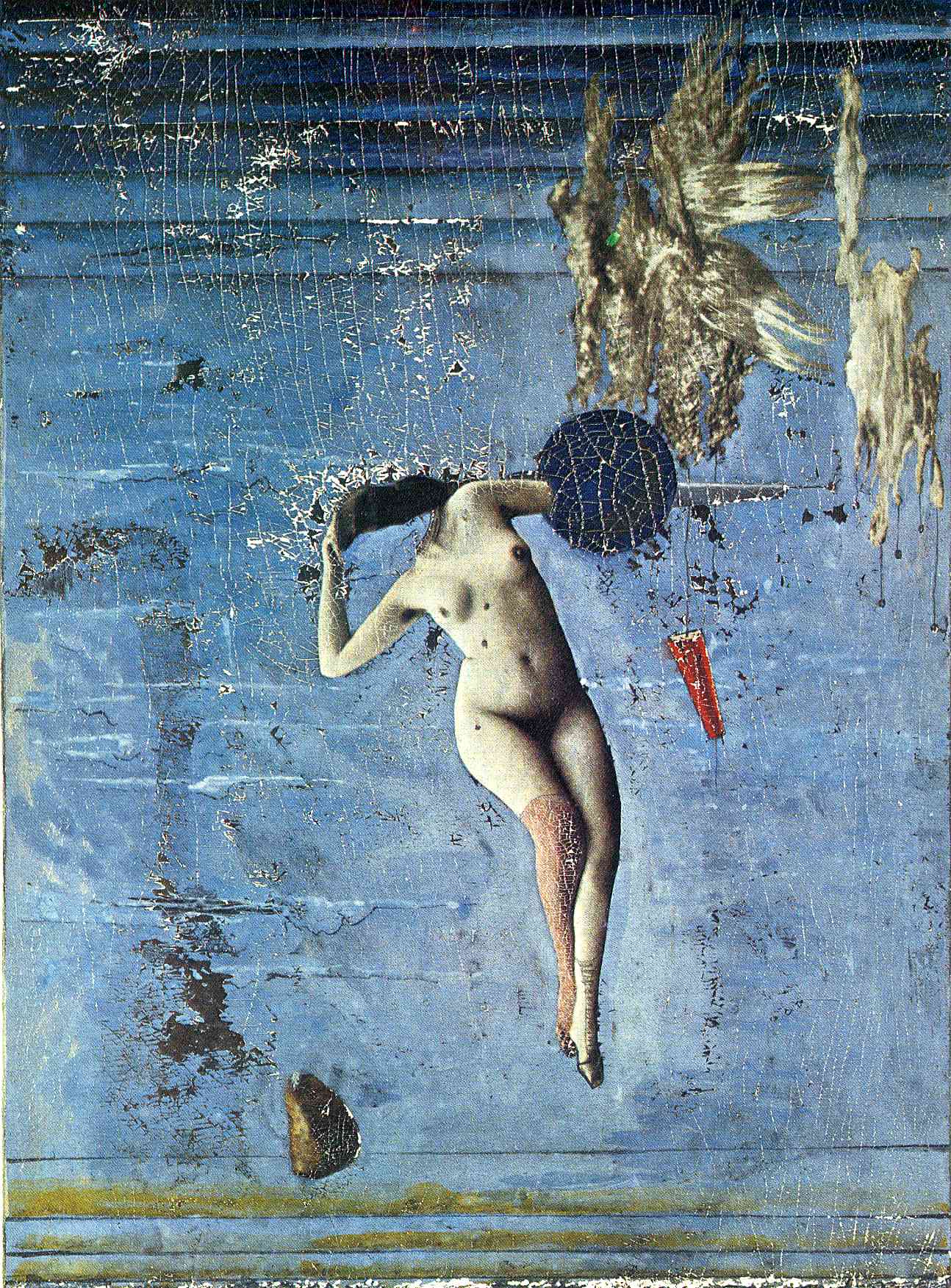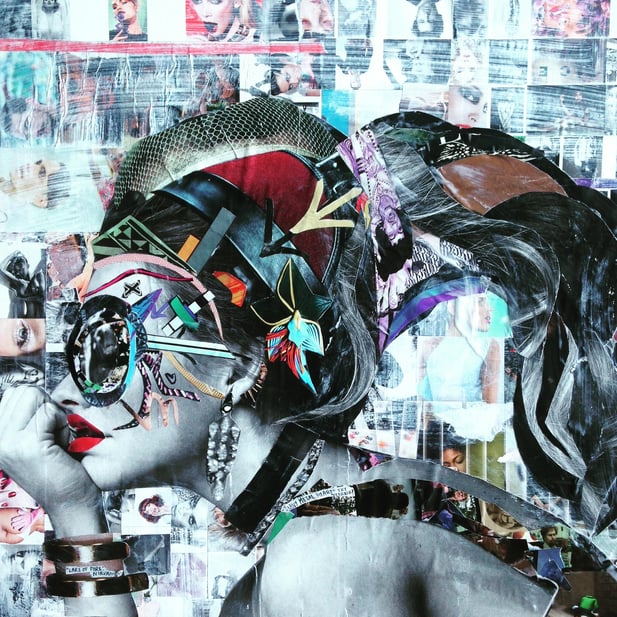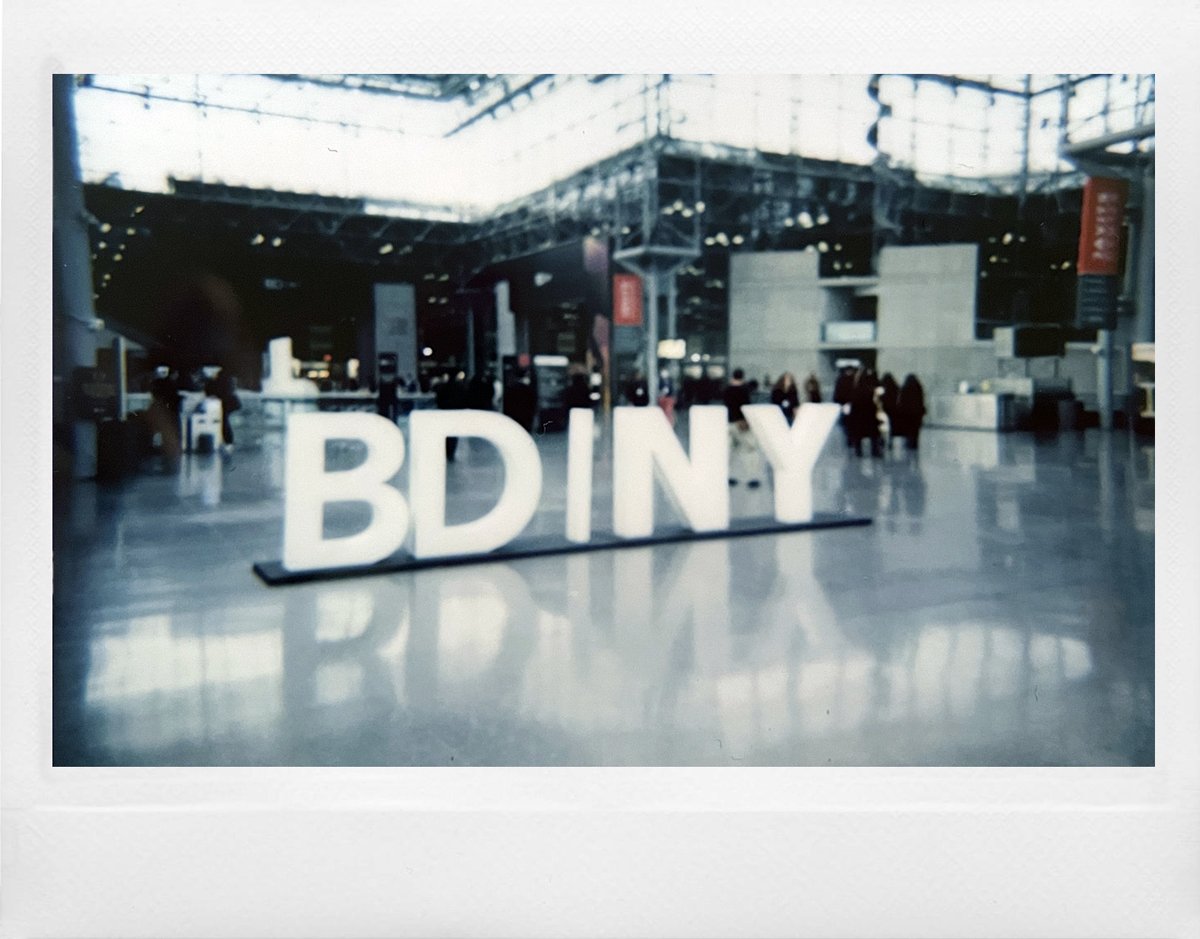Collage slowly seeped into art through painting. Remnants of torn labels, discarded newspapers, and old cardboard allowed artists to incorporate their three dimensional world onto a flat surface. The vestiges of this real world ephemera helped fossilize the contemporary zeitgeist at the point of creation.
At the turn of the 20th century, Picasso and Braque began adding paper-scraps to their work while exploring their new movement Cubism. They coined this papier collé and collage was born.
|
Picasso, "Guitar, Sheet Music, and Glass," 1912. |
Georges Braque, "Fruit, Dish, and Glass," 1912 |
Collage quickly took off and became a way for pre-war artists to voice their political and social frustrations. Adding scarp materials or paper was now a commonplace addition and a medium in its own right.
|
Raoul Hausmann, The Art Critic 1919-20 |
Max Ernst, Pleiades, 1920 |
Over the years collage has evolved, but remains a response to society. Whether digital collages or delicate amalgamations, this artistic approach summarizes the state of an environment at a particular moment. As we progress further into a technologically driven society, artists have embraced collage as a visual approach to understanding reality.
From pop collages to delicate amalgamations, Indiewalls' artists and beyond continue to push this ever evolving medium... paper just got a lot more interesting.
